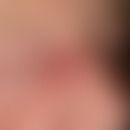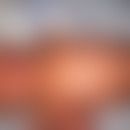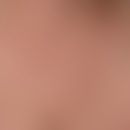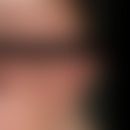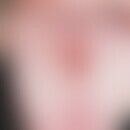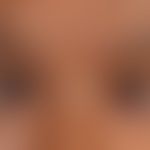DefinitionThis section has been translated automatically.
Clinically descriptive term for a perinatal condition that can occur in various forms of ichthyosis. No independent clinical picture. In most cases an autosomal recessive hereditary lamellar ichthyosis (ARCI) is present. However, collodion membranes are also observed in other forms of ichthyosis.
ManifestationThis section has been translated automatically.
You might also be interested in
ClinicThis section has been translated automatically.
Diffuse redness, lamellar scaling, sometimes brownish, creased, dry, parchment-like skin coating over the entire body. Mostly presence of an ectropion. Combinations with hypotrichosis, nail changes, heart defects, short stature, oligophrenia, microophthalmia, deep corneal clouding or epilepsy are also possible. Skin detachment within a few days to weeks. The further course is different. Often a lamellar ichthyosis (see below Ichthyosis) develops, in some cases the skin completely normalizes within weeks to months. Collodion babies are newborns at risk and require special monitoring.
General therapyThis section has been translated automatically.
External therapyThis section has been translated automatically.
Internal therapyThis section has been translated automatically.
Progression/forecastThis section has been translated automatically.
Different. Depending on the classification of the underlying form of ichthyosis. Approximately 10% of children with collodion skin or congenital ichthyosiform erythroderma experience almost complete healing of the ichthyosis within the first months of life. This is caused by a pressure-sensitive mutation in the transglutaminase 1 gene.
LiteratureThis section has been translated automatically.
- Akcakus M et al (2003) Collodion baby associated with asymmetric crying facies: a case report. Pediatric dermatol 20: 134-136
- DiGiovanna JJ et al (2003) Ichthyosis: etiology, diagnosis, and management. At J Clin Dermatol 4: 81-95
- Ganemo A et al (2003) Autosomal recessive congenital ichthyosis in Sweden and Estonia: clinical, genetic and ultrastructural findings in eighty-three patients. Acta Derm Venereol 83: 24-30
- Langer K et al (1991) Collodion baby with transition to mild ichthyosis. Dermatologist 42: 34-38
- Taieb A et al (2002) Collodion baby: what's new. J Eur Acad Dermatol Venereol 16: 436-437
- Van Gysel D et al (2002) Collodion baby: a follow-up study of 17 cases. J Eur Acad Dermatol Venereol 16: 472-475
Incoming links (5)
Gaucher's disease; Ichthyosis follicularis with alopecia and photophobia; Ichthyosis x-linked recessive; Tretinoin cream hydrophilic 0.025/0.05 or 0.1% (nrf 11.101.); Urea cream hydrophilic 5 or 10% (nrf 11.71.);Outgoing links (10)
Autosomal recessive congenital ichthyosis; Cephalosporins; Chlorhexidine; Ectropium; Hypotrichosis; Ichthyosis (overview); Scale ; Tretinoin cream hydrophilic 0.025/0.05 or 0.1% (nrf 11.101.); Urea cream hydrophilic 5 or 10% (nrf 11.71.); Urea (overview);Disclaimer
Please ask your physician for a reliable diagnosis. This website is only meant as a reference.
